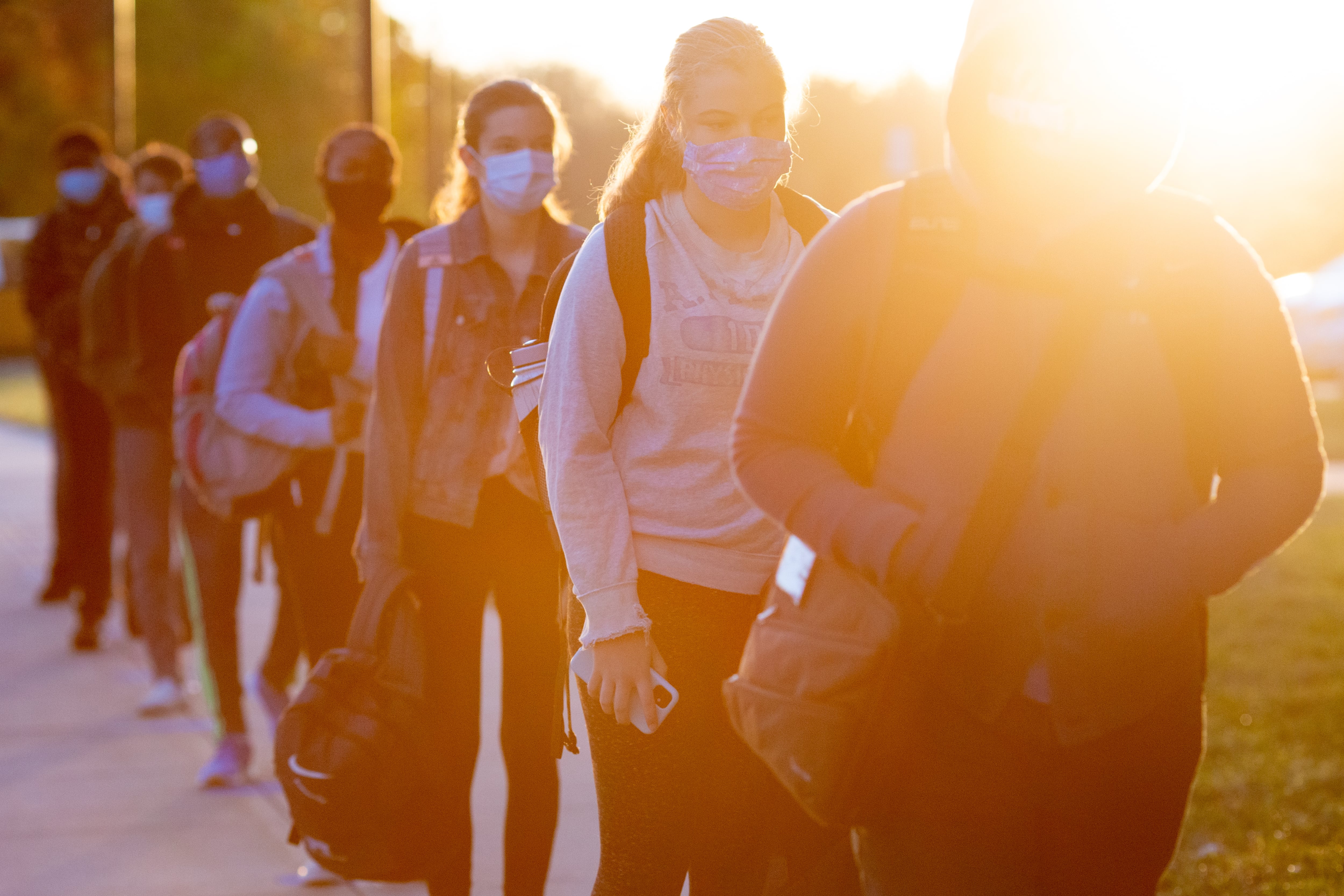Several years ago, few students attended summer school in Tuscaloosa, Alabama. Most of those who did came under the threat of being held back a grade.
Convinced that summer learning could provide big benefits to students who were far behind, the district set out on a new course: create a program that was workable for families and fun for students. Enrollment surged.
“Do we want to do this programming to boost student learning? Yes,” said Andrew Maxey, who oversees the summer programs in the city. “But it’s not myopically focused on that issue. It’s addressing the whole child.”
Schools across the country are now making their own plans to expand summer school. The moment seems right: More and more school buildings are open, as school staff get vaccinated. Schools are flush with federal cash, some of which is earmarked for addressing learning loss. And families are enthusiastic. A recent poll found that three quarters of parents want to see more summer programming this year.
Research also suggests that summer school can lead to small but real gains in student learning — probably large enough to make a dent in learning gaps that have opened up due to COVID.
Still, simply offering summer school is one thing; creating an effective program is another.
Research — and the experiences of districts like Tuscaloosa — offer some lessons about how to make summer programs more likely to succeed. Here are six.
1. Students have to show up to learn, so find ways to encourage attendance — and avoid drudgery.
One ambitious summer program, studied in several cities, offers an important lesson. The initiative recruited low-performing students to take full-day summer school classes for two summers. The problem? Many students simply didn’t show up.
About 20% of students who signed up didn’t come at all, and daily attendance for the rest during summer classes hovered around 75%. Only about a third of kids regularly attended summer classes for two straight years.
“We ended up losing a ton of kids,” said Catherine Augustine, co-author of the study and a researcher at the RAND Corporation.
Not surprisingly, then, only students who consistently showed up seemed to make gains. The point is obvious but important: for summer school to work, students have to attend.
One way around that is to make summer school mandatory for students who are behind. But threatening to hold a kid back if they don’t go to summer school often isn’t popular with parents, and having a student repeat a grade usually backfires.
In the wake of this pandemic year, districts are largely looking to voluntary programs. That leaves districts to convince students and families that signing up for and regularly attending summer school is worth it.
To do this, many districts say their goal is to make summer school engaging, and not solely focused on reading and math instruction.
Schools might consider a broad set of activities, from music, art, and dance classes to college visits and field trips to attend live theater or art museums. Research has found that each offers tangible benefits to students that go beyond test scores, including increasing their connection to school and boosting their likelihood of taking advanced courses.
Augustine’s study also showed that student attendance was higher in schools that had a more positive climate and stronger relationships between students and staff.
“Were the kids smiling? Were staff greeting them warmly? Were their hugs? Were there high fives?” she said. “If the kids are enjoying it, they’re going to want to go back.”
2. Actively recruit families and remove potential obstacles.
Maxey in Tuscaloosa said officials called parents whose child was behind to coax them into signing up for summer school. If the family was hesitant, they asked why and tried to fix the issues.
“The question was, how do we remove barriers?” he said.
That surfaced some relatively simple roadblocks that the district might not have known about, like parents’ need for a more convenient bus stop near their home.
There and elsewhere, schools have tried to accommodate parents’ work schedules by offering full-day programs, ensuring there are options for children at all grade levels for families with multiple kids, and providing as much notice as possible so parents can make plans for the summer.
And if schools want to target specific groups of students — like those who are behind or who learned remotely this school year — they should actively reach out to those families, rather than assuming their kids will show up, Maxey said.
Schools should also be cognizant of parents’ COVID-related concerns and provide clear, accurate information about safety precautions they are taking and the low COVID risk to their children of attending.
3. Make summer school appealing for teachers, too.
Some districts have already decided to up their usual pay for working during the summer. Programs are likely to need more teachers, and teachers may need more enticement than usual to work during summer break after a year of heightened stress.
Schools should also try to design summer programs that are appealing to teachers. That could mean small class sizes, a pre-planned curriculum, and the opportunity to work half days or to teach just one subject consistently.
“If the district is going to design a program with those features, they should advertise that,” said Augustine. That’s one of many suggestions in a recent RAND report on creating effective summer programs. “That could get a teacher who’s on the fence to think, ‘Oh, I could do this.’”
4. Think twice before going with an online summer school.
Because of lingering COVID concerns among some families, schools might be tempted to offer remote summer programming. But schools shouldn’t expect significant academic benefits from doing so.
One (pre-COVID) study found that students did not make any clear learning gains from a fully online summer math program. Meanwhile, schools have seen the challenges of remote instruction up close this school year, and the difficulties are likely to be magnified over the summer.
“As much of it as we can do in person is going to be important,” New York City schools chief Meisha Porter said earlier this month, though she acknowledged that some families will want a remote option. “Every single student in New York City lost out on their school year, so we need to think about all of our learners.”
5. Consider how summer school programs can lead into next school year.
New Mexico has an unusual program that is envisioned as not simply “summer school” but an early start to the school year. Research found that this benefitted students in early grades, boosting their literacy skills while providing a smoother transition into the next year.
The program also served as an experiment in staffing. In response to a court decision a few years ago, the state expanded the program and required students’ summer teacher be the same teacher they have during the regular school year. This made some sense: relationships matter in education, and students often do better when they have the same teacher and the same peers for multiple years.
But it proved challenging to implement, since the summer program was optional for both teachers and students. “That posed some issues,” said Gwen Perea Warniment of the New Mexico Public Education Department. “It was a little bit difficult to navigate.”
The lesson: Use the summer as an opportunity to build relationships between students and school staff, but avoid difficult-to-implement mandates.
6. Have realistic expectations.
How much can schools really expect from summer programs?
On a basic level, summer instruction is an extension of schooling. In a typical year, research shows that students make steady academic progress over the course of the school year, and then flatline or backslide during the summer (at least as measured on tests). In that sense, offering summer school is a common-sense way to keep students learning.
Specific studies of summer school programs, including in New York City and Louisiana, generally back that up.
Academic gains from these programs weren’t trivial, but they weren’t huge either. They’re more or less what you might expect from several extra weeks of school. And that might pale in comparison to the missed learning that students suffered during the pandemic.
And of course, there may be benefits to summer programs that extend beyond academics — like re-engaging students in school, helping them reconnect with their friends, and giving exhausted parents a break.
Still, school officials should have realistic expectations for summer school and consider it one of multiple catch-up strategies.
Some are already doing so. The Achievement First charter school network, for one, is thinking about offering summer school, tutoring, and other resources to students who are behind over multiple years.
“The challenge is so substantial,” said Richard Buery, the network’s CEO. “It’s not a one-year approach. It’s a three-year approach.”





